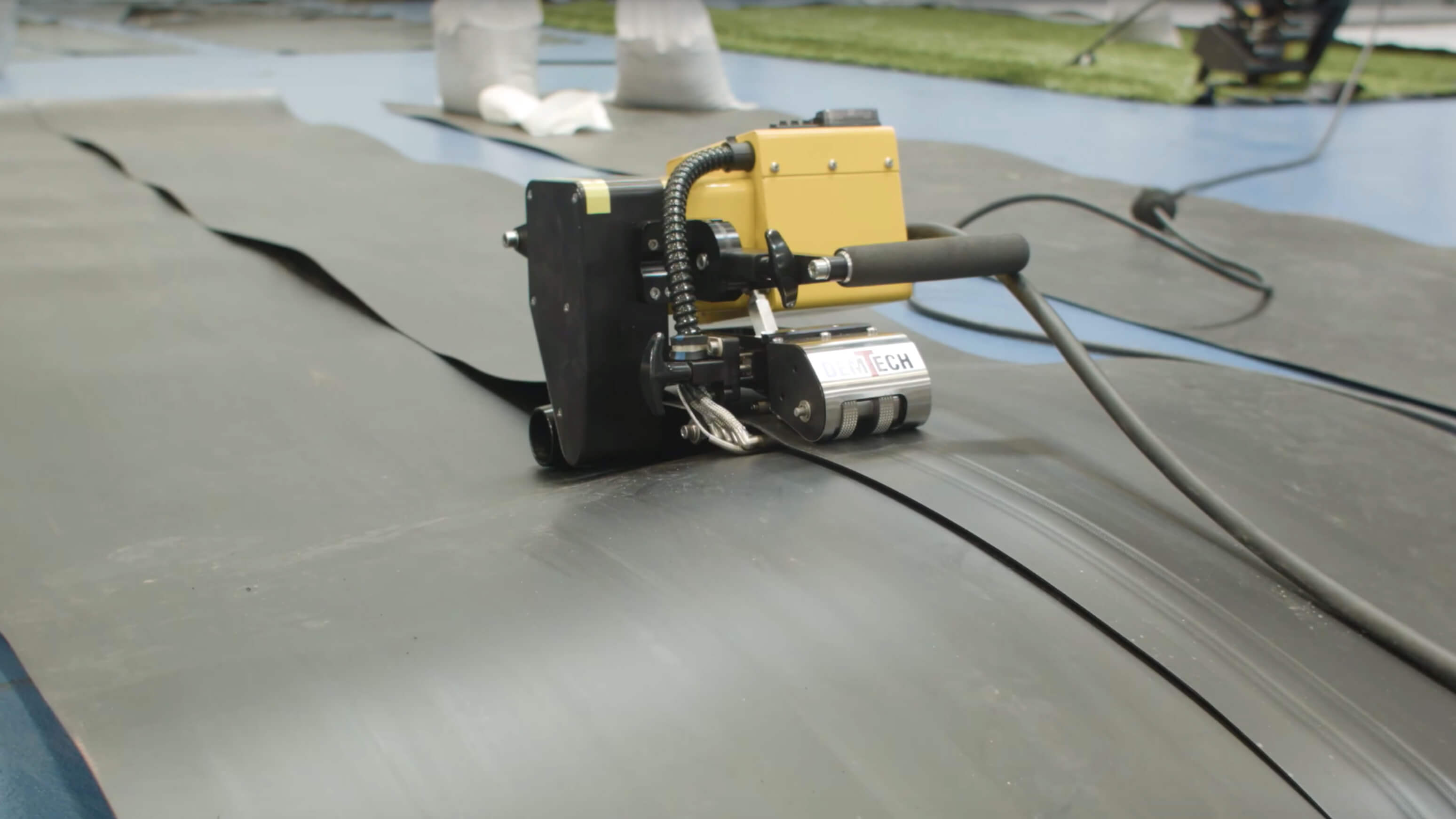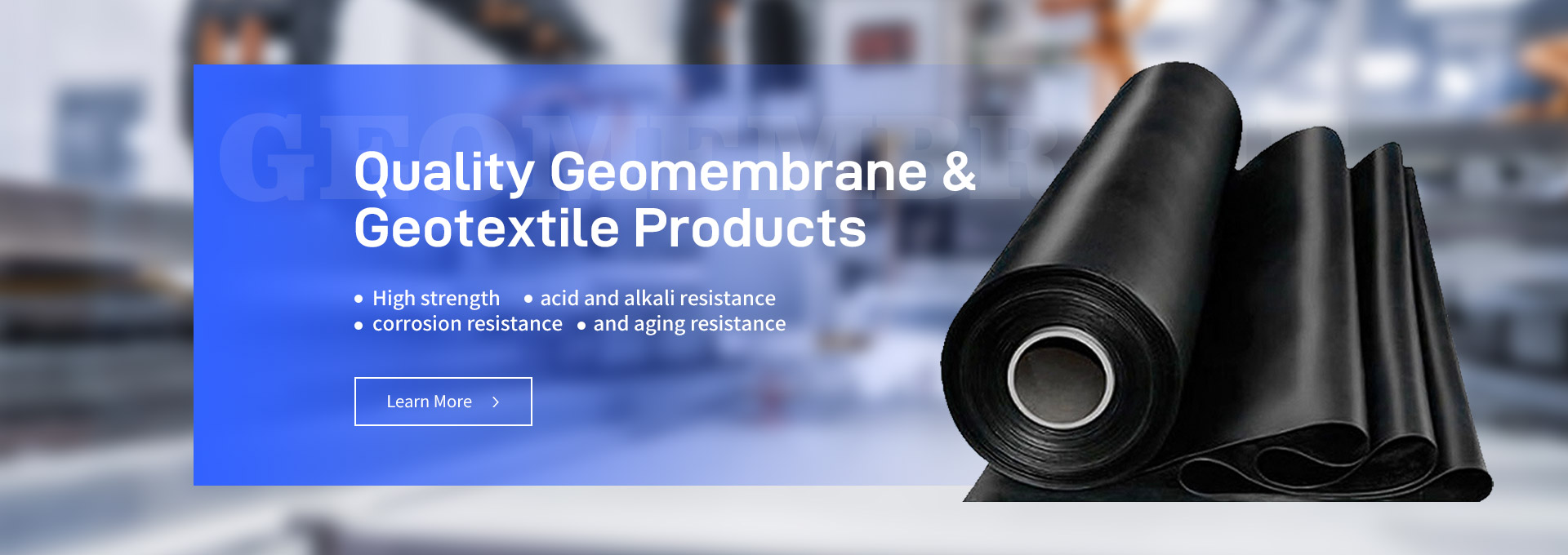When it comes to environmental protection, water containment, and construction, geomembranes are integral components used in a variety of applications, such as landfills, reservoirs, and canals. These synthetic membranes are widely used due to their ability to resist chemicals, provide excellent waterproofing, and ensure long-term durability. However, to maximize their effectiveness, ensuring the quality of the seams, or welds, between geomembranes is crucial. Proper welding techniques can prevent leaks, preserve the integrity of the project, and extend the lifespan of the geomembrane installation.

Understanding the Welding Process of Geomembranes
Welding geomembranes is not a simple task; it requires both skill and precision to ensure the seams hold strong and are impermeable. There are two primary types of welding techniques used for geomembranes: hot wedge welding and extrusion welding.
1.Hot Wedge Welding
This is a commonly used technique where a heated wedge is applied between two layers of geomembrane material, which are then pressed together to form a secure bond. The temperature, pressure, and speed of the welding process must be carefully controlled to ensure a successful weld.
2.Extrusion Welding
In extrusion welding, a welding rod (usually made of the same material as the geomembrane) is fed through a heated nozzle and applied to the seam to melt the material, which is then pressed into the joint to create a solid, impermeable weld.
Each of these methods requires skilled operators to ensure a high-quality outcome. Additionally, the equipment must be calibrated, and proper field testing is essential to verify that the seams meet the required standards.
Importance of Seam Quality in Geomembrane Installations
The quality of the seams in a geomembrane installation plays a vital role in the overall effectiveness of the membrane. If the seams are improperly welded, they can result in gaps, weak spots, or areas susceptible to leakage. These flaws can compromise the entire project, leading to water seepage, contamination, or even structural failure.
A smooth geomembrane surface is essential for a good weld. Uneven surfaces can hinder the welding process, resulting in poor bonding between the geomembranes. It is critical that the surfaces of the geomembrane are clean, free of contaminants, and smooth before welding. Dust, dirt, or moisture on the surface can interfere with the welding process and lead to poor seam quality.
Additionally, if the geomembrane is exposed to extreme temperatures or environmental conditions, the weld quality can be affected. This is why proper storage and handling of the geomembrane material before installation are also critical factors to consider.
Key Factors to Ensure Seam Quality
1. Proper Surface Preparation
Before any welding process begins, the surfaces of the geomembrane must be prepared. This involves cleaning the areas that will be welded to ensure there are no contaminants, such as dirt or oil, that could interfere with the bonding process. The surface should also be dry and smooth to avoid welding defects.
2. Welding Equipment Calibration
The equipment used for welding, whether hot wedge or extrusion welding, must be properly calibrated. The temperature and speed settings of the equipment must be adjusted according to the manufacturer’s recommendations. Too high or too low a temperature can cause incomplete bonding or even damage to the geomembrane.
3. Operator Training and Experience
Welding geomembranes is a specialized skill. It requires trained operators who understand the intricacies of different welding techniques and how to control various factors, such as pressure, temperature, and speed. Inexperienced welders may not be able to achieve the desired seam quality, leading to weak points and leaks.
4. Inspection and Testing
Once the welding is complete, a thorough inspection must be performed to ensure the seams are properly fused and there are no defects. Common tests include peel tests, pneumatic pressure tests, and vacuum box tests. These tests help detect leaks or weak spots in the seams. In many cases, it is necessary to re-weld any areas that fail these tests to ensure a high-quality, durable seal.
5. Quality Control Standards
Working with a reputable geomembrane manufacturer ensures that the material being used meets industry standards for quality and performance. Manufacturers will provide technical specifications and guidelines on welding techniques, material handling, and maintenance, which can help contractors ensure the best results in the field.
Conclusion
In conclusion, the quality of the seams in a geomembrane installation is paramount to the long-term success of the project. Proper surface preparation, skilled operators, calibrated equipment, and rigorous testing are all crucial elements in ensuring strong, durable, and leak-proof seams. By working with an experienced geomembrane manufacturer and following best practices, contractors can minimize the risk of issues and create a secure installation that will last for years to come.
Whether you are using smooth geomembrane for a water containment system or an HDPE geomembrane for landfill liners, the importance of quality welding cannot be overstated. Ensuring proper seam integrity will not only enhance the performance of the geomembrane but also contribute to the overall success of the project.

